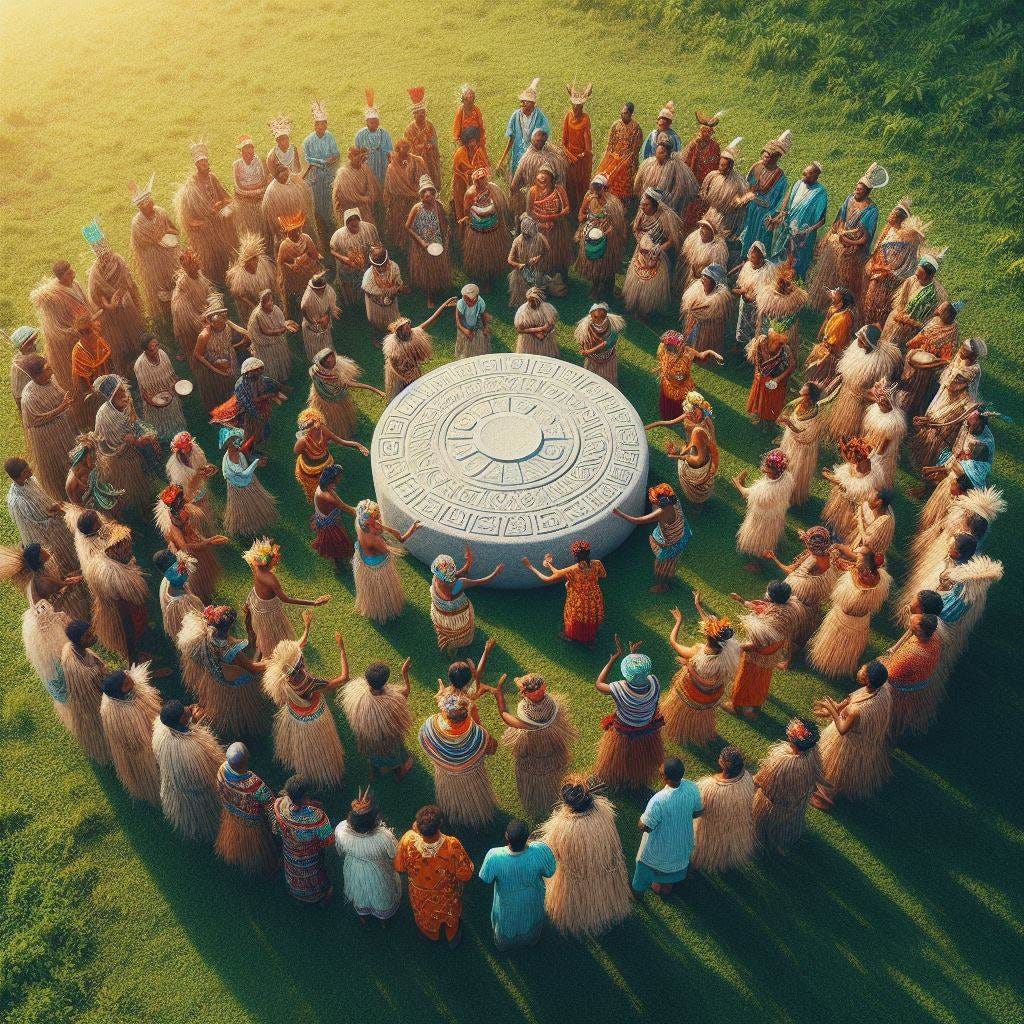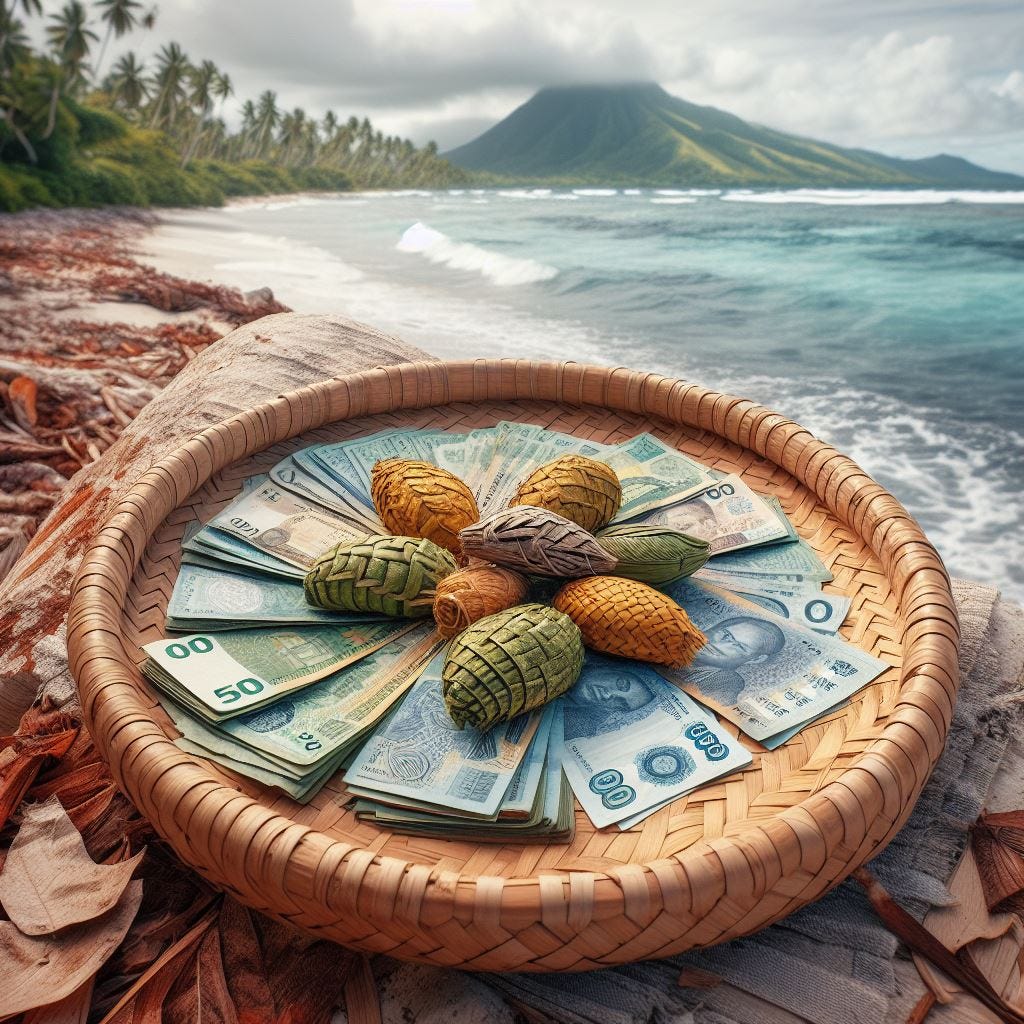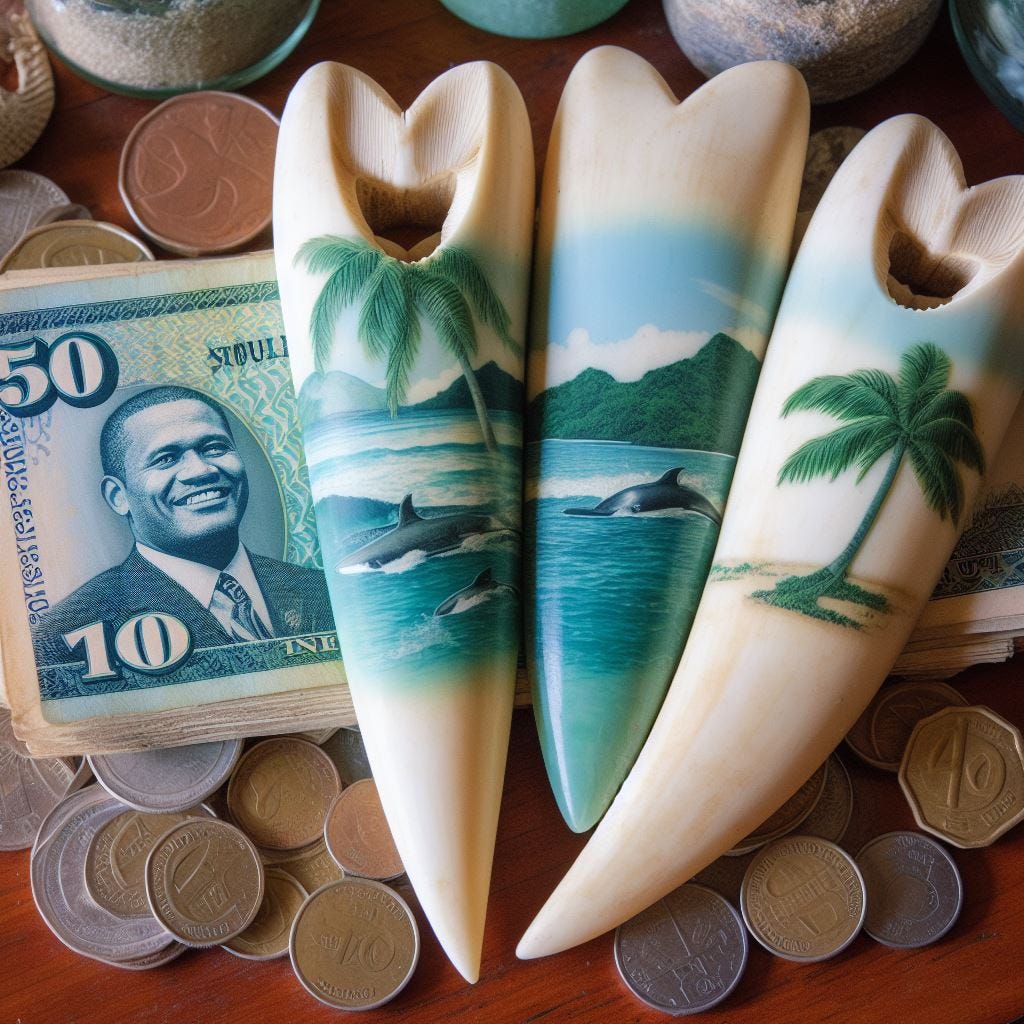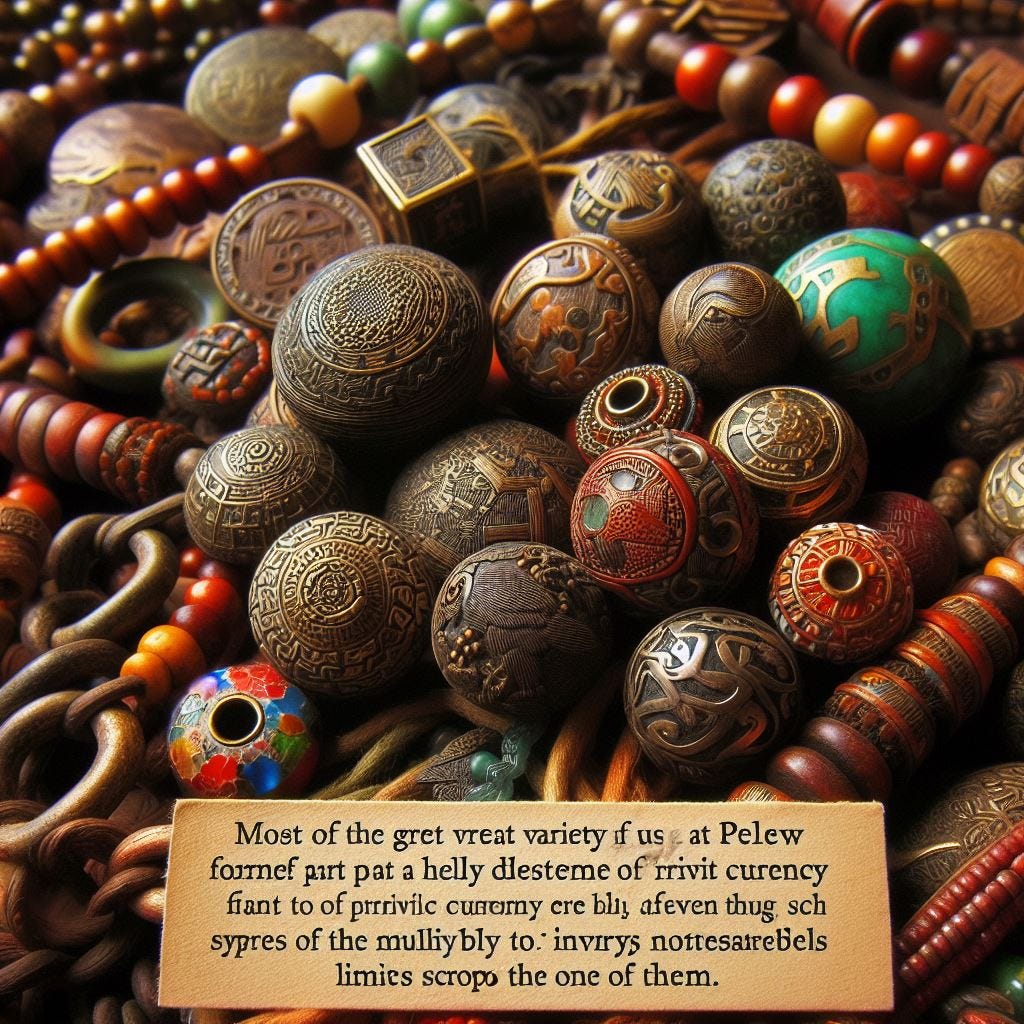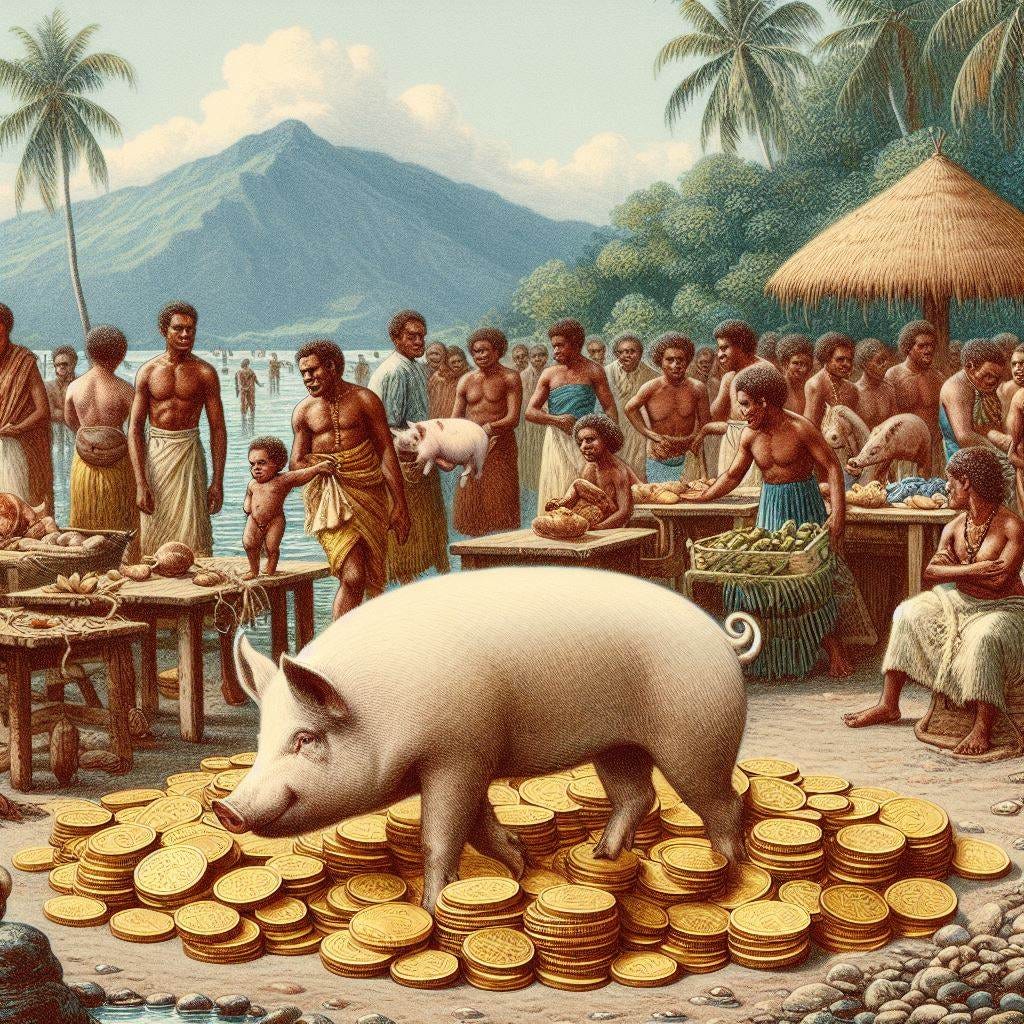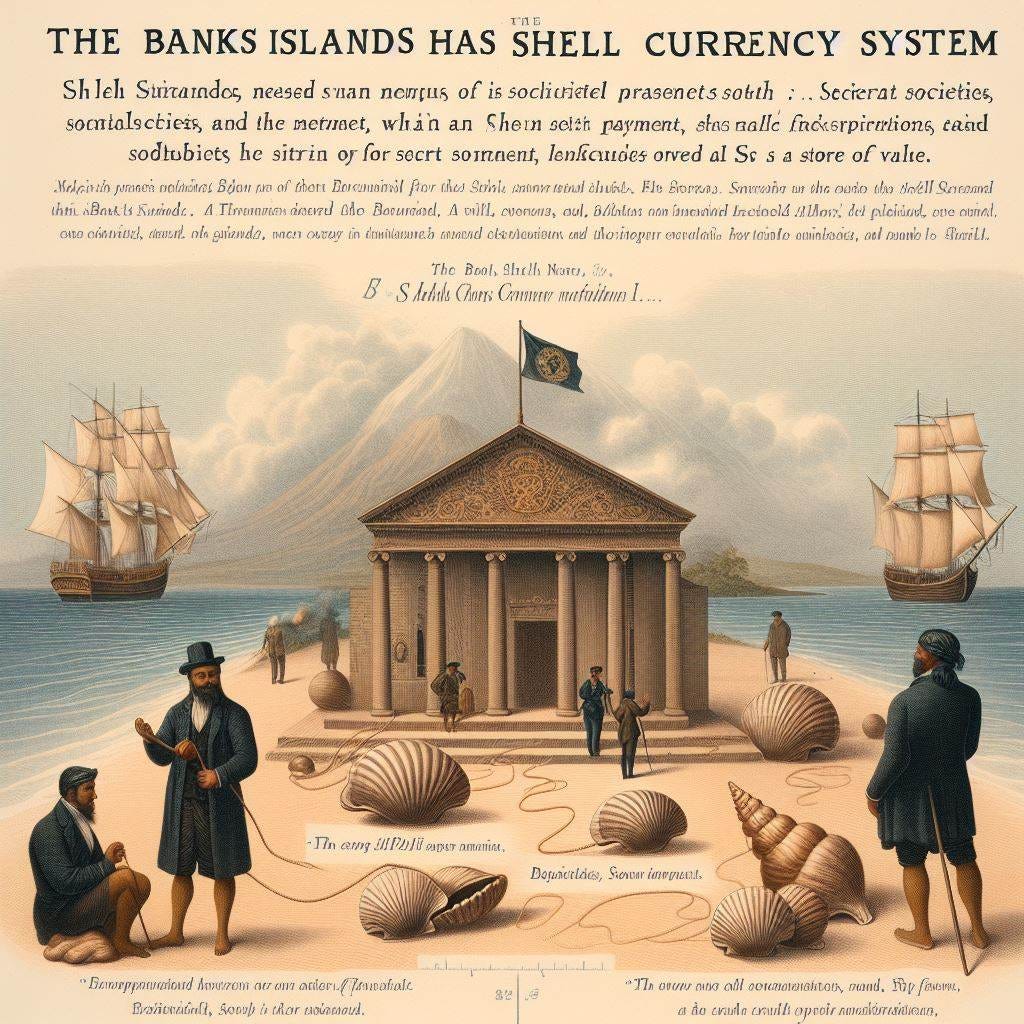The Background to Primitive Money (What is an example of primitive money?)
The Background to Primitive Money (What is an example of primitive money?)
The natural history of money is an almost virgin subject
(Jevons,1875 )
The circumstances of the origin and early development of money were indeed a practically uncharted territory for economists. But even ethnologists had, and still have, a great deal to learn, as those of them who know enough about primitive money to know how much more there is to know undoubtedly realize. I try to summarize the “Paul Einzig - Primitive Money” book with several samples and author’s statements on the primitive money.
The Evolution of Money: Beyond Economic Necessity
One is left with the impression that barterers, one morning, suddenly became alert to the benefits of monetary exchange, and, by that afternoon, were busy using some good as money.(Lawrence White,The Theory of Monetary Institutions,1999)
The economists still believe that the adoption of money was decided upon when barter became too inconvenient; that the nature of the money chosen was always determined by the economic requirements of the community; and that the process of improvement of the monetary system culminating in the adoption of coinage was necessarily determined by economic considerations. In reality the convenience of trade was only one of the many factors responsible for the origin and evolution of primitive monetary systems.
The significant gap in our understanding of how money developed
The study of early forms of money, often called primitive money, is vastly neglected by economists and monetary historians. These fields prioritize more recent periods, and even attempts to explore early monetary history are met with criticism. Despite this neglect, many economists still feel comfortable offering explanations for the origin of money without actually researching the topic. They often rely on basic ideas from Adam Smith's "Wealth of Nations" and repeat the same tired theories without seeking new evidence or fresh examples. This lack of in-depth study creates a significant gap in our understanding of how money developed in the first place.
Jevons, Menger, Keynes and Cassel
The author acknowledges that some economists:
Jevons is one of the few economists who had taken some trouble over studying primitive currency it is not surprising that he had been able to arrive at the conclusion that in many instances the use of primitive money as a store of value preceded its other monetary uses.
It is peculiarly interesting to find oxen thus used as the common measure of value, because from other passages it is probable, as already mentioned, that the precious metals, though as yet uncoined, were used as a store of value, and occasionally as a medium of exchange. (Jevons,Money and the Mechanism of Exchange, Link)
Theoretical economists such as Menger and Cassel realized the absurdity of the conventional theory according to which money was necessarily invented when the commercial turnover reached such an advanced stage that barter conditions became intolerable.
Money has not been generated by law. In its origin it is a social, and not a state-institution. Sanction by the authority of the state is a notion alien to it. On the other hand, however, by state recognition and state regulation, this social institution of money has been perfected and adjusted.(Menger, On the Origin of Money, Link)
Although Keynes confessed to have had no time to study early monetary history in detail, he duly realized that when a medium of exchange was not used also as a standard of value the community concerned would hardly be considered to have emerged from the stage of barter.
The Samples of Primitive Money
The Stone Money of Yap
The monetary use of large stone discs on Yap is surely one of the strangest systems human brain has ever devised. Its size varies from that of a plate to a gigantic disc with a diameter of more than twice the size of a full-grown man. There is a hole in the middle of each stone to facilitate its transportation with the aid of a pole thrust through it. Some of the stones are believed to be more than 200 years old. Stones, big and small, perform the functions of a store of value. They were practically the only form of mobile investment of the inhabitants in addition to their boats.
Stone money also serves the purpose of a medium of exchange, though to a considerably less degree. In this respect it is necessary to discriminate between large stones and small ones. The latter circulate freely within the community.Price describes a scene in which a queen proceeded to a shopping expedition with two muscular slaves carrying two smallish stones. These small "coins" change hands frequently. On the other hand, the large stones hardly ever change hands. Everybody prefers to have a few large stones rather than a large number of small ones. The very large specimens cannot possibly be used in everyday transactions.
No information is available about the extent to which stone money serves as a unit of account. Presumably owing to the fact that its value varies not only according to its size but also according to its quality, it is not used frequently for expressing prices. On the other hand, it is used extensively as a standard of deferred payments. Debts are frequently contracted in terms of stone money. Indeed, traders actually encourage the accumulation of debts in the hope that they will be paid with large stones instead of small ones. Loans are granted in stone money. No interest is charged for 3 to 4 months, thereafter interest is paid in the form of pearl shells. Stone money was also used for political payments. A large specimen was sufficient to buy the active support of a neutral tribe in an inter-tribal war.
The 3-span stone of good whiteness and shape purchases 50 baskets of food (a basket being about 18 in. long and 16 in. deep and containing taro roots, husked coconuts, yams and bananas), or a pig weighing between 80 and 100 lb, or 1,000 coconuts. The smallest piece of stone money a family could obtain a month's supply of yam, taro, fish and other foodstuffs.
On the basis of all relevant evidence available, it is perhaps permissible to answer the question whether the "stone money of Yap" could really be considered money in a somewhat hesitant affirmative.
Mat and Bark Cloth Money in Samoa
The entire economic and social system of Samoa was built on the frequency of exchanges in which mats, and to a less extent local bark cloth, play a prominent part. The mats are made by women, and their size is between 2 and 3 yards square. Many months and even years are sometimes spent over the making of a single mat. These fine mats are considered the most valuable property of the Samoans and form a sort of currency which they give and receive in exchange.
Fine mats are highly valuable. They serve as a medium of exchange.
Fine mats in Samoa are a medium of exchange and a standard of wealth.
Mats play the part of money for the purposes of paying for certain services and objects.
Fine mats are a fixed medium of exchange.
The relatives of the bride have to give to the bridegroom and his friends, on the celebration of the wedding, a large quantity of fine mats and bark cloth prepared by women. In order to secure the largest possible number of mats, chiefs usually married a large number of women— indeed, marriage constituted the main economic incentive and barter arising from it represented a very large percentage of the turnover of goods. On the occasion of the election of chiefs and kings, the candidates distribute mats among the electors. Whoever has most mats to distribute stands the best chance of being elected. The successful candidate, in return, receives mats from the people, so that on balance he may even have gained. In inter-tribal wars allies could be bought with mats.
Whales' Teeth Currency in Fiji
Whales' teeth were only used for big transactions in the forties of the last century. One single whale's tooth was said to have been sufficient to buy a big canoe. It was also accepted as blood money for a murdered man.It was extensively used as bride money. The power of a whale's tooth that he who accepted it could not refuse the request it carried with it, whether it be for a mere gift, or for an alliance, or for a human life.
The Bead Currency of Pelew
Pelew (Palau) had a complex bead currency system with seven main types, varying in value and material. The most valuable, Brak, was a rare yellow stone. Other beads were used for everyday transactions and were categorized into various sub-types. The beads served as a medium of exchange, store of value, and unit of account, integrated deeply into the social and economic fabric. All articles of daily use can be bought with bead money. The smaller denominations are used regularly as a medium of exchange, to a much larger extent than is the stone money of Yap.
Pig Exchanges on the New Hebrides
Pigs of a definite type constitute the foundation of an involved currency and credit system and the entire economic, political and social life centres around their monetary use. The value of a pig could vary based on its size and tusks. Pigs were essential in the economic and social structures of the New Hebrides, reflecting wealth and status.
Pigs serve extensively as a standard and means of deferred payments. A most elaborate and extensive credit system in terms of pigs has developed in the New Hebrides. For the purpose of buying a bride, or of gaining admission into a secret society, a young man must borrow pigs from his relatives, or from fellow-members of secret societies if he is already a member. These debts must be repaid with interest. The rate of interest is equal to the growth of the tusk— that is, the extent to which the tusks would have grown during the period of the loan. Repayment must be made, therefore, by returning pigs with bigger tusks; and since it usually takes a long time to repay the loans, the tusks must be considerably more developed. This means that the pigs to be returned have to be much more valuable and more expensive than those received.
The entire economic system of the New Hebrides is based on the reciprocity of gifts. Rich men are in a position to entertain on a generous scale and to make such generous presents that the recipients are not in a position to reciprocate adequately, so therefore they lose face and have to acknowledge their inferiority.
The Feather Money of Santa Cruz
Feather money in Santa Cruz consisted of strings of small, dyed feathers. These were used primarily for social purposes and as a store of value. Feather money was also involved in significant transactions like bride prices and compensation payments. Its usage highlighted the cultural importance of feathers and their role in the social economy.
Shell Loans on the Banks Islands
The Banks Islands had a sophisticated shell currency system linked to secret societies. Shell strings, measured by length, were used for transactions, social payments, and as a store of value. Admission and promotion within secret societies required significant shell payments, perpetuating social hierarchies and economic obligations.
Engin YILMAZ (
)




